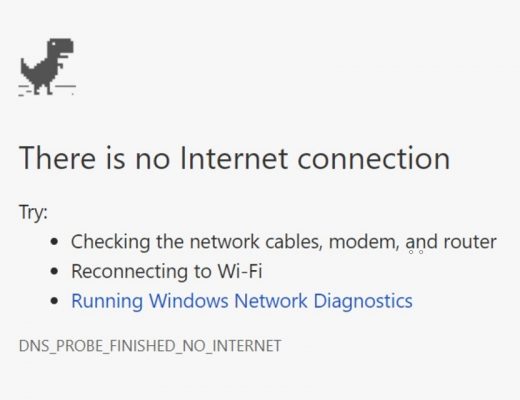The most efficient request for proposals (RFP) software removes silos and fosters cooperation. It is flexible, implying that it responds to the demands of its clients in the present instant and swiftly adjusts to the needs of the future.
Humans have been accountable for the development of the most significant software. The tools of artificial intelligence (AI), machine learning (ML), and the processing of natural languages have the capacity to adapt to the requirements of their users, which enables them to operate more efficiently. The top organisations that design an RFP platform go even further and include input from customers into their product development process on a regular basis.
In particular, effective RFP software and software firms do all of these things, but they do it with the sole intention of supporting efficiency, compliance, and trust in the RFP response procedure. By working together under a single response management platform, effective responders are able to achieve the best possible outcomes.
What Is RFP Software?
Request for proposal (RFP) software enables businesses to reply to a greater number of RFPs in a shorter amount of time. Of course, they are only the leading edge of the ocean in terms of advanced RFP software features. Smart RFP software helps optimise all stages of the process, from the time the paper is delivered to the time the proposal is accepted.
Steps For Selecting The Appropriate Request For Proposals (RFP) Management Software
Choosing the best RFP management software is not something to do carelessly. There are many factors to consider:
Examine Your Procedure For Responding To RFPs
Consult with relevant parties to find out existing requirements before starting your search for your future response platform. How many RFPs do you respond to every month/year? What is your budget? What objectives do you have? Which elements in your process are lacking or not being taken advantage of?
A very basic platform, such as one that provides nothing for automation, could work just fine for you if, for example, you have just one location with a small workforce and reply to only a few RFPs each year.
However, if you depend on a global corporate organisation with stakeholders, you might want more advanced automation, complex interfaces, reporting features, content management, and translation tools. All the same, the option of on-demand support might be advantageous to any organisation.
Recognise Your Areas Of Distress
Recognise your issues and parts that want improvement when you evaluate your requirements. The most frequent complaints we get are:
- Massive quantities of dispersed and compartmentalised data: If your business is similar to numerous others, important data is kept in file cabinets, individual PCs, or even departments. To democratise data, trust a single source of truth. Your SMEs will appreciate it.
- Updating and evaluating shouldn’t be too tough as what is valid now might not remain valid tomorrow. Intelligent artificial intelligence (AI)-driven content management solutions enhance content administration.
- Low response capacity – Each organisation could have a distinct understanding of this term. However, it could be a good idea to review your procedures if you find yourself unable to come up with convincing responses to RFPs that align with your business model or are feasible alternatives due to time or financial limitations. Either you need improved procedures, or you are attempting to respond to too many RFPs. You can figure out which with the use of actionable data generated by sophisticated RFP software.
- Overly long reaction times – If your staff often works beyond normal hours to fulfil deadlines, time-saving solutions and integrations, together with an automatically responsive content management system, can assist you stay organised.
- Workflow fragmentation – Keeping team focus in an environment of workflow fragmentation could be simplified through the adoption of teamwork and project management solutions.
- Never stop creating new things—Set up recurring procedures and templates to free up your time for tasks you have not completed a thousand times.
With advanced RFP software, you can react with pre-approved material that is ready to use while also providing quantifiable outcomes and insight into each answer. The stakes in revenue, legal matters, and brand protection are high.
Do your security, legal, and finance teams use the programme just for RFX replies, or do they also use it for other purposes like security surveys and due diligence questionnaires? If the latter is true, your goals should be to have a strong content management system, smart templates, and extensive import/export and reporting capabilities. If your workforce is scattered or remote, look for connectors to help your current workflows.
Look At Platforms For Evaluating RFP Software
Any purchasing decision has to involve third-party validation, and this is especially true for RFP software. To compare and contrast features and look up feedback from others, use such RFP software comparison tools. In RFP response management, analysing real-world use cases will promote ideas and help in decision-making.
Conduct A Value Evaluation Based On Data
Do you have no clue how much time your staff spends on RFP responses? By monitoring everyone’s time, you can demystify these expenditures. Use the ROI calculator to determine the number of hours and funds you will save with RFP response automation. With this information, you may effectively argue for more funding to cover RFP software by using statistics rather than feelings.
Recognise The Service & The Product
Request a demo from the RFP software providers you have selected to view the solution in action and get to know the staff you could collaborate with. Bring along the inquiries requiring solutions and a breakdown of the most significant attributes. Since the solution must be simple and quick to understand for all RFP contributors, pay close attention to the user experience.
Conclusion
Selecting suitable software for po process is important if you want to optimise response times, boost productivity, and promote teamwork. By careful assessment of the needs of your business, pinpointing areas in need of development, and extensive investigation, you may choose a software programme that matches your goals and optimises return on investment. When making your choice, do not forget to take aspects like customer service, third-party validation, usability, and functionality into account. By providing your staff with the necessary RFP software, you can enable them to reply to requests for proposals (RFPs) in an efficient manner, which will eventually lead to your company’s expansion and success.








No Comments